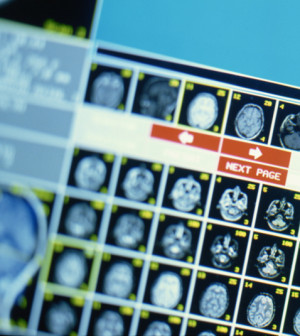- Navigating Your Midlife Crisis: Embracing New Possibilities
- City Raccoons Showing Signs of Domestication
- Mapping the Exposome: Science Broadens Focus to Environmental Disease Triggers
- One Week Less on Social Media Linked to Better Mental Health
- Your Brain Changes in Stages as You Age, Study Finds
- Some Suicide Victims Show No Typical Warning Signs, Study Finds
- ByHeart Formula Faces Lawsuits After Babies Sickened With Botulism
- Switch to Vegan Diet Could Cut Your Greenhouse Gas Emissions in Half
- Regular Bedtime Does Wonders for Blood Pressure
- Dining Alone Could Mean Worse Nutrition for Seniors
More U.S. Adults Using Marijuana Than Ever

As perceptions of marijuana change, more American adults are using pot than ever before, and they’re using it more often, a new study finds.
Over 13 percent of adults surveyed in 2014 said they’d used marijuana in the previous year, up from roughly 10 percent in 2002.
Also, daily or near daily use — five days or more a week — rose from less than 2 percent to almost 4 percent of adults during that time period.
“This increase has corresponded with the legal and social acceptance of marijuana, and so it is not such a surprise,” said lead study author Dr. Wilson Compton, deputy director of the U.S. National Institute on Drug Abuse.
He pointed out that over the past 20 years, medical marijuana has been legalized in 25 states and the District of Columbia.
However, noting that marijuana’s potency has increased, Compton’s team said education about the harms of pot is essential.
“We need to think about how to do appropriate prevention messaging to make sure people aren’t putting themselves at risk for becoming dependent and other problems associated with the drug,” he said.
These harms could include “difficulty with their work performance and with their ability to think clearly and function,” Compton said.
For the report — published Aug. 31 in The Lancet Psychiatry — researchers surveyed nearly 600,000 adults from 2002 to 2014.
Based on the findings, the researchers estimated that the overall number of marijuana users increased from 22 million to 32 million during that period, with first-time marijuana users jumping from more than 800,000 to 1.4 million.
Daily users numbered more than 8 million in 2014 — more than twice as many as in 2002, the study authors determined.
Greater pot use was associated with a drop in the percentage of people who associate smoking marijuana with harm. Where just one-third of Americans once considered marijuana safe, now half do, according to the report.
Despite greater usage, rates of marijuana abuse or dependence held steady in the general population at about 1.5 percent from 2002 to 2014. But among pot users only, the rate of marijuana abuse or dependence dropped from 15 percent to 11 percent, the researchers found.
Wayne Hall is director of the Centre for Youth Substance Abuse Research at the University of Queensland in Australia. “Over the period in which medical marijuana was legalized in the U.S., adult use of marijuana increased but the proportion of problem users did not,” he said.
The reasons for this are unclear, said Hall, co-author of an accompanying journal editorial. They may reflect changes in the characteristics of U.S. marijuana users, he said.
“Namely, there are fewer users among young adults who are more likely to develop problems with use, and perhaps more older people are returning to infrequent use now that is legal, thereby reducing the proportion of all users who report problems,” Hall said.
It’s too early to tell if these trends will continue, Hall said.
“We need to monitor marijuana use over the next decade or so to see what effect the legalization of adult marijuana use has on rates of use and rates of problem use,” he said.
Those more likely to develop dependence on marijuana are male, are younger, have low education levels, are not working full-time, have depression and use tobacco or other substances, according to the report.
One expert believes that legalizing marijuana but controlling its use is the best way to prevent misuse.
“A pragmatic regulatory framework that allows for the legal, licensed, commercial production and retail sale of cannabis to adults, but restricts and discourages its use among young people, best reduces the risks associated with the plant’s use or abuse,” said Paul Armentano, deputy director of the marijuana advocacy group NORML.
More information
There’s more on marijuana at the U.S. National Institute on Drug Abuse.
Source: HealthDay
Copyright © 2025 HealthDay. All rights reserved.










